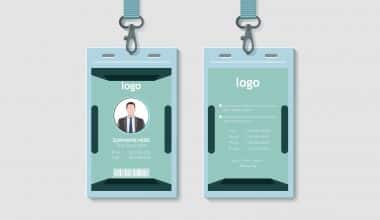The turnover of employees is inevitable; nonetheless, effectively managing employee transitions is a vital and beneficial investment for companies, despite the fact that it is never simple. You should try your best to part ways amicably with former colleagues who move on to new opportunities. However, shifting can be difficult, and employees often leave feeling disgruntled, mistreated, or underwhelmed. A solid offboarding program may help HR avoid common issues and smooth the transition for both the departing employee and HR. In this article, we will discuss offboarding checklist, software, cyber security, and why offboarding is important.
What Is Offboarding?
Offboarding is the procedure that results in a formal split between a worker and the company via retirement, termination, or resignation. It includes every choice and action made throughout the course of an employee’s departure.
In contrast, offboarding oversees the departure of an employee from a company. The process of offboarding an employee after their resignation or termination includes all that has to be done to ensure a smooth transition.
If the offboarding procedure is clear, the transfer for the company and the individual should go off without a hitch.
Such examples could be:
- Changing the worker’s duties to someone else
- Eliminating Passwords and Restricting Access
- Equipment return
- Taking the time to do post-employment interviews
The goal of offboarding is to make sure there are no lingering questions or issues once an employee has left the organization, such as if they still have their ID badge or not. You can also gain insight into how to better serve your present and future staff members through this process.
What Are the Steps in the Offboarding Process?
The offboarding procedure should consist of the following steps:
#1. Communicate the Employee’s Departure to the Other Groups
Human resources (HR), finance, and information technology (IT) should all be notified as soon as possible when an employee is leaving. These groups are responsible for terminating IT privileges, closing accounts, and handling final payments.
Maintaining solid ties with rival squads is crucial from a networking perspective. How, for instance, can you fill the gap left by a departing employee who was crucial to the success of a cross-departmental project?
Making intentional promises to one another is something we discuss often discuss, especially when collaborating across departments. Strong relationships with coworkers can be maintained by open and timely communication of changes.
If an employee’s departure will have an effect on a deadline, deliverable, or project, let everyone involved know as soon as possible. This can assist reduce stress, bridge communication gaps, and lessen the impact of any unexpected changes.
By keeping them in the loop, you can ensure that no important offboarding steps are missed and that the processes go more quickly.
#2. Reassign the Worker’s Duties to Someone Else
It may take some time to find a suitable replacement for a departing worker. Start looking for a replacement as soon as possible to prevent a loss of production. This could involve finding a new hire or delegating the task to an existing employee.
The next step is to train the new hire to take over the position. Have the outgoing worker train their replacement if at all possible. The process through which information is shared between individuals is known as knowledge transfer.
Ask the worker things like these to accomplish this goal:
- When you think of your job, what do you do most often?
- Do you have a method for organizing your workday?
- Do you know if your successor will need training on any programs or software?
- To what documents should your successor have access?
To start up where the previous employee left off, the answers to these questions are crucial.
#3. Cancel User Accounts
After an employee’s last day of employment, they should have all of their access privileges revoked. Take away the use of all programs and apps, including:
- Business correspondence
- Software Permissions
- Media of Transmission
- Software for managing projects
You should also disable any door entry security badges or entry code access you may have.
Delete all of your personal information from any company-issued laptops before handing them off to a new employee. Otherwise, the departing employee is responsible for handing over all company-related data stored on any personal devices to the IT administrator.
This prevents confidential company or client information from falling into the hands of former employees. Data breaches can occur if sensitive information is obtained by unauthorized parties, such as a former employee who is bitter about being let go.
A data breach is both a serious risk and a significant financial burden. Data breaches typically cost companies $4.24 million in 2021. Make sure you’re taking all the necessary precautions to keep your information (and your money) safe.
#4. Finalize the Documentation and Make Any Necessary Payments
Depending on the company’s policy and the terms outlined in the employee handbook, a departing employee may be required to complete specific paperwork. Security disclosures and nondisclosure agreements are two examples of such paperwork.
Once you’ve informed HR that an employee will be leaving, they can begin drafting exit documentation. The payroll would be scheduled by the finance department so that the employee would be paid in full prior to their departure.
The employee will receive their final paycheck before being taken off of the payroll by the accounting department.
#5. Initiate an Exit Interview
An exit interview provides a final opportunity to leave on amicable professional terms with a departing employee. It also provides valuable information for enhancing the company’s culture.
Ask the departing employee about their impressions of the company’s management approach in an exit interview. Inquire about the work procedures and the general mood of the staff. Here are a few questions to ask at the end of an interview:
- When you were working, did you feel like you have the tools and support you needed to succeed?
- How well did your initial expectations for the job line up with reality?
- Where do you stand with your coworkers?
- Do you feel like there was anything we could have done differently to prevent your departure?
- In your opinion, what is the single most important thing that needs fixing?
- Would you suggest this company to someone looking for a job? If so, explain why. And if the answer is no, please explain why.
- Are you thinking about coming back to work for this firm?
Insist that the worker give forthright responses to these questions. You should also be ready to take feedback, both positive and negative. Pay close attention to your staff members, no matter the nature of their comments. Workers are aware that their opinions are being ignored. The exit interview is a crucial part of the feedback process since it shows workers that their opinions matter.
Communicate the interview’s findings to higher-ups. In addition, if an employee has a complaint, you should address their concerns as soon as possible.
Offboarding Software
Offboarding software streamlines the paperwork necessary with an employee’s departure or termination by centralizing the process. When an employee leaves their position, offboarding software streamlines the process by streamlining administrative tasks and reducing the need for paperwork. By automating tasks like providing personal leave documentation, document generation, and reference creation, offboarding software reduces the amount of manual labor required. In addition, offboarding software keeps a company’s name and reputation in good standing even after an employee has left. Software for offboarding employees is usually part of a broader HR management system that also handles employee onboarding, departure interviews, and other tasks.
A product must meet the following criteria in order to be eligible for Offboarding:
- Keep tabs on the HR termination documentation in progress
- Gather information that will help keep your best employees from defecting to the competition
- Facilitate open lines of contact between your company and departing employees
- Control the return of tools and the withdrawal of access for departing workers.
Best Offboarding Software
Here are some of the best offboarding software you might likely want to use in your company as an HR manager.
#1. Atlan
The cutting-edge information hub. Facilitate the speedy discovery of all your data assets, from data tables to BI reports. Finding the precise object you’re looking for is a breeze thanks to our sophisticated search algorithms and user-friendly interface. Because Atlan develops data quality profiles automatically, spotting inaccurate information is a breeze. We can find missing values and identify anomalies, as well as automatically identify variable types and calculate frequency distributions.
With Atlan, monitoring and administering your data environment is a breeze. You may build dynamic access restrictions and best-in-class governance by having Atlan’s bots go through your SQL query history to automatically generate data lineage and discover PII data. Our Excel-like query builder allows even non-technical users to directly query across numerous data lakes, warehouses, and DBs. Data collaboration comes to life with built-in support for popular programs like Tableau and Jupyter.
#2. Click Boarding
Employee engagement is the foundation of a successful business in the modern world. Increased employee expectations and the negative effects of turnover highlight the importance of a solid onboarding process. This is the first step in improving the employee experience over their whole career with a company. The Click experience platform allows for an infinite number of “human moments” that keep employees happy, involved, and, ultimately, on board. Click’s totally compliant and ever-engaging employee journey platform may help you make the transition from candidates to champions.
Essentially, onboarding is just the first step. Provide a comprehensive, hands-on staff onboarding process. Permit smooth, well-orchestrated transitions for employees at all times to maximize retention. Self-service options and access to top-notch software and IT experts should be made available to employees.
#3. BetterCloud
BetterCloud facilitates the elimination of manual offboarding tasks and their associated errors for companies. When an employee leaves the company, the administrator can quickly and easily remove their access to all company applications using BetterCloud. This aids in preventing data breaches and releases of sensitive information caused by departing employees.
IT departments can use BetterCloud’s library of over 900 operations to automate the deletion of user accounts, application and group memberships, and the transfer of any relevant files. By streamlining the offboarding process, BetterCloud helps IT departments save time and prevent sensitive information from falling into the wrong hands.
Features:
- Protects sensitive information from former workers’ exits
- Offers a plethora of prebuilt workflows for automating offboarding processes
- Aids in satisfying regulatory and safety mandates
#4. Rippling
With Rippling, it’s easy to give or revoke access to popular business apps like Slack and Trello for your entire staff with just a few mouse clicks. By automating various processes, IT helps speed the offboarding process and decreases the amount of manual labor needed. Rippling provides automated protocols for removing an employee’s access to critical apps upon their departure, relieving IT administrators of this burden.
Features:
- prevents former workers from gaining access to sensitive data
- Once an employee quits, the offboarding process is automated.
#5. Blissfully (Vendor)
When an employee leaves your company, Blissfully’s offboarding workflows make sure they are removed from the system as soon as possible and in a secure manner. The software generates to-do lists of offboarding tasks in advance, so you and your team won’t forget anything important.
Features:
- Reduces the risk of security breaches by cutting off former employees’ access to company data and systems.
- During offboarding, make a list of things to do for each user that is specific to their department and position.
- Keep an eye out, make a copy, and delete all Google Workspace accounts before you go.
#6. Zluri
Zluri is a SaaS management tool that grants enterprises full command over their SaaS programs. It allows businesses to automate a wide range of processes, including employee onboarding and offboarding as well as compliance monitoring.
Zluri has many useful features, including:
- Automation of the hiring and offboarding process: Zluri’s robust automation engine allows companies to quickly and easily grant or cancel access to employees. It also has a contextual suggestion system that can tell you which programs a new hire should have access to based on their position and level within the company. In addition, it suggests which channels/groups an employee should join.
- Effective Management of Vendors: Its streamlined vendor management system offers everything you need to keep track of your SaaS installations. It integrates with your primary business system to keep a SaaS system of record and then gets ready to manage your vendor life cycle using the processes you design.
- Tracking Renewals: It eliminates the possibility of sudden renewal fees. They will send you a reminder before your subscription expires so you may evaluate whether or not you still find value in it. Zluri’s insights into SaaS adoption and utilization will help you make that call.
Offboarding Checklist
The specifics of your offboarding procedure should be tailored to the company, the sector, and the employee’s position. However, any offboarding checklist needs to address the following key areas.
When it comes to employees, offboarding isn’t as important as onboarding. Although it’s exciting to bring on new workers, it’s also crucial to treat departing workers with respect. Leaving on good terms keeps the workplace pleasant and improves the odds of future success for all involved. An Offboarding employee is a great approach to getting user input for future retention efforts and reducing security and legal issues.
Good employees are more likely to return to work if you have an established offboarding checklist. In a competitive labor market, “boomerang employees” (former workers who left but later returned) are highly sought after. Also, read EMPLOYEE DEPARTURE: What to Say and Best Way to Say It.
How Do You Offboard an Employee?
An effective offboarding checklist can help both the departing employee and the business elegantly navigate the emotional and potentially fraught waters of this transition. Methods to design a sensitive and productive offboarding checklist include the following:
#1. Be Fair and Kind to Employees Who Are Leaving
No matter the circumstances of their departure, you should treat leaving employees with respect and decency. Express gratitude to the departing worker for all of their hard work and the time and effort they put into their job and the company.
Retaliation, legal threats, and data breaches can all be avoided with a civil separation of employment, and the company also stands to gain from retaining a strong, long-term relationship with the departing employee in the shape of a future customer, brand ambassador, or industry connection.
#2. Discuss Your Departure
Notifying coworkers of a worker’s departure can be awkward, but it’s in everyone’s best interest to do so as quickly as possible. If you delay, it’s possible that some of your coworkers will try to fill in the blanks on their own. Because of this, things may get awkward or a voluntary departure may be misconstrued as dismissal.
Sharing employee departures and, in the case of retirement, publicly praising and thanking the employee for their time and service, can help prevent rumors and misunderstandings. Whether a departure is voluntary or involuntary, it’s always best to be upfront with the rest of the team about the situation. Recognize when errors have been made and show how they will be addressed.
#3. Confiscate and Revoke Access to Property
Securing company assets, canceling employees’ system access, and ensuring compliance with any other company regulations are some of the more easy components of the offboarding checklist, and they stay the same whether offboarding employees who are leaving voluntarily or involuntarily.
Insist that the departing worker returns all business property, including keys, badges, credit cards, uniforms, mobile devices, vehicles, and paperwork. Despite its apparent simplicity, this ensures that no insider information will be leaked, either by accident or on purpose.
Additionally, don’t forget to change the locks, disable the alarms, and remove the keys from any former employees before they go. Email, company intranets, customer relationship management systems, social media profiles, and sales databases all fit into this category. In the event of a mutually agreeable termination, it is polite to offer the departing employee advance notice or a grace period during which they can retrieve any personal data they wish and notify any contacts who may need the employee’s new email address.
#4. Prevent Productivity Loss at Your Company
The departure of an employee, whether it be planned or unexpected, can have a significant impact on the organization. Sometimes, other workers will have to step up to the plate to cover the slack, which may be taxing and frustrating for everyone involved.
Communicate openly and sympathetically with your personnel about how the leaving will affect various departments, and ensure that everyone is prepared for any necessary adjustments to their regular routines. Recognizing the lack of sustainability in a short-term situation is crucial to the continued success of a business, thus it’s critical to pay the remaining employees more for taking on more responsibility and developing a strategy to handle any necessary extra labor. Collaborate with the leaving worker to guarantee a smooth knowledge transfer, and wrap up any loose ends, to lessen the departure’s effect on production.
#5. Maintain Communication
If the employee is departing on good terms, keeping in touch after they’ve left is a terrific opportunity to offer them love and appreciation even as they move on from the firm. Depending on the nature of your engagement with the worker, this could mean calling or emailing them, setting up a coffee date, or inviting them to business activities. Maintaining cordial contact with former employees is in everyone’s best interest, as they may go on to work for contractors or clients of your business.
This can help your business in two ways: it can prevent an unhappy employee from taking legal action or retaliation, and it can encourage the former employee to speak well about you and your firm. Having a good working connection with the employee’s predecessor is important since the new hire may need assistance with a specific assignment.
Offboarding Cyber Security
While HR managers naturally focus on the myriad of HR-related activities associated with onboarding, they would be remiss to overlook the importance of cyber security in the offboarding process. Human resources managers should coordinate with other departments to ensure everyone who participates in the offboarding process is adhering to standard cyber security procedures.
HR should work with other divisions, like IT and legal, during onboarding to provide a foundation for proper cyber security processes during offboarding.
Here are some things HR managers can do to make sure they’re not leaving any security holes behind when an employee leaves.
#1. Use the Onboarding Process to Start Using Cybersecurity Best Practices
The first step in a successful offboarding checklist is onboarding. It’s not enough for HR to simply hire a reliable worker or contractor; they must also communicate and gain agreement on the company’s security rules and procedures with the new hire. If employees are compelled to approve of security policies, they are more likely to be adhered to.
Human resources professionals can also find innovative ways to bring up the topic of offboarding cyber security expectations with personnel on a regular basis. It’s better to do something, even if it’s only a staff meeting or a hilarious video than to just send out copies of the employee handbook and do nothing else.
Human resources personnel also have a responsibility to make clear to workers what would happen if they breach the company’s security regulations. Workers will follow management’s example if it regards security regulations and protocols as an afterthought.
#2. Acquire Company Possessions
Employee gadgets and other hardware must be collected to prevent confidential information or access from falling into the wrong hands. Human resources and information technology should check in jointly to make sure all business property has been returned to the outgoing employee.
In addition to the more visible laptops, tablets, and smartphones, this property also includes things like door badges, tokens, dongles, and USB drives. Handwritten notes and other relevant material may contain intellectual property or customer information, therefore HR and IT should consider recovering them as well.
It may be necessary to inspect personal devices used by staff and independent contractors. The manager of the employee is another source of information for the HR department regarding the employee’s access to corporate equipment.
#3. Discuss the Terms and Conditions With the Legal Team
Human resources managers should consult an attorney to identify the best course of action for enforcing confidentiality agreements and other post-employment terms and conditions.
Also, HR must ensure the departing worker is aware that all terms and conditions will continue to apply even after their departure. Human Resources should consult legal counsel about how to manage violations of agreements.
#4. Turn Off Access to Company Systems
If HR doesn’t coordinate with IT to disable former employees’ access to business computers, networks, and applications, it’s easy for them to cause trouble after leaving the organization. If deleting an account is in the best interests of the service or the law, it can be done. A backup plan consisting of HR verifying that IT has finished these responsibilities is a solid option.
This job must begin before a staff member is let go. Human resources and information technology should compile a list of all employees with access to company systems to facilitate the removal of unauthorized access.
Why Is Offboarding Important
A company’s core principles and mission statement serve as the organization’s north star.
Each employee’s departure from the organization should be a reflection of its core beliefs and mission. When an employee is departing, the organization has one last chance to demonstrate compassion and appreciation.
You may make a positive impression on current employees during offboarding, and you can also reinforce that image with the employees’ former coworkers. Consider the following points as to why offboarding employees is so important.
#1. Aids in Bringing Back Former Employees
It’s not necessarily the end of the road for former employees of a corporation. It is not uncommon for former employees to return to their previous employers after spending some time working elsewhere.
These workers are known as boomerang employees, regardless of whether they return to their prior position or take on a new one.
Research conducted in 2020 found that boomerang workers were more dedicated to their employers than other workers. They went above and beyond the call of duty by taking on extra tasks for the company.
Employees who leave and then come back are a boon because of the expertise and experience they bring with them. Rehires have an advantage over new recruits since they can jump right into their work without needing as much training.
In addition, employees who have gone through a smooth offboarding process are more likely to consider coming back to work for the organization in the future.
#2. Improves Data Security
Data breaches caused by departing workers occur in roughly 20% of businesses. This makes sense considering that 25% of workers are still using credentials from their previous employer.
Unfortunately, if an employee is fired for no good reason, they may try to retaliate against the organization. The employee could leak sensitive client information by, say, deleting files or uploading them to a public server.
Some former employees, if they still have access to corporate accounts, may attempt to defraud the company’s customers.
The confidentiality and cyber security of proprietary company information is maintained through a smooth offboarding procedure. Employees’ accounts would be closed and their company-issued equipment returned as part of this procedure. Exiting employees’ accounts may be deleted or their permissions modified by IT. That way, former workers won’t be able to access sensitive information even if they try.
#3. Mitigation of Compliance Risks
Certain rules and laws may apply to employee termination, depending on the field in which you operate.
Exit interviews are a useful tool for companies since they can reveal any problems employee encounters while working there. Without fear of retaliation, they can talk about encounters with racism, misogyny, and workplace pressure. In this approach, the employer can take care of the problem before the employee goes public with it or uses it.
When an employee leaves an EU-based company, personal data must be wiped from all devices in compliance with the General Data Protection Regulation (GDPR).
Having a solid offboarding procedure in place will make it less of a hassle to follow the rules. More people will have faith in your firm if it has a spotless reputation and ensures the privacy of its client’s data.
#4. Promotes Brand Loyalty
The offboarding process for a departing employee should involve more than a quick handshake and a wave of goodbye.
Such coldness can have a devastating impact on morale in the workplace. That could lead to customers posting negative feedback about your business online. All of these things hurt your company’s reputation as an employer.
All employees who are leaving should be left as brand ambassadors through a well-designed offboarding process. It’s a great way to show appreciation for someone’s hard work and hear about their time at your organization from their perspective. That way, when they go, they will be more likely to brag about you to others.
The way you handle departing employees sends a message to your present workforce. Customers will feel more comfortable purchasing from you if they know you care about them. People’s desire to work for you will be affected by all of these factors.
Conclusion
Offboarding is a crucial part of the HR process that is often overlooked in favor of onboarding. Maintaining productivity and minimizing disruption during employee transitions is possible with careful planning of the offboarding process. Your organization will be shielded from productivity loss, legal action, and retaliation, and you’ll gain insight into where your business model could use some tweaks.
Offboarding FAQs
What is the goal of employee offboarding?
When a person leaves a company, there are risks and potential losses that must be managed through an offboarding process. A common part of offboarding is gathering the departing employee’s thoughts on the company’s culture and how it could be improved.
What is the difference between offboarding and onboarding?
The onboarding process starts when an applicant accepts a job offer. It includes everything that needs to happen for a new worker to be effectively deployed and begin contributing right away. Offboarding is the process of separating an employee from a company, the inverse of onboarding. Knowledge exchange across staff members is one possible mechanism for this.
Similar Articles
- FNMA RENTAL INCOME: Meaning and Guidelines
- New Hire Onboarding Best Practices In 2023
- EMPLOYEE ONBOARDING: What You Should Know About The Entire Onboarding Process.
- COMPANY ASSET MANAGEMENT SOFTWARE: Top Best Software






